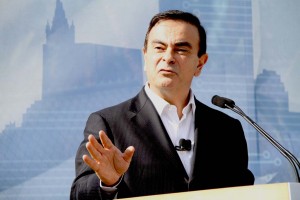Despite the economic problems in Europe and concerns about a double-dip recession in the U.S., the Euro-Asian Renault-Nissan Alliance set a sales record in 2011, collectively marketing a total 8.03 million vehicles around the world, including 4.67 million vehicles for Nissan, 2.72 million for Renault, and 638,000 for AvtoVAZ, their Russian partner.
The Alliance achieved a 10.3% increase in volume from the 7.28 million vehicles sold across the Alliance in calendar-year 2010 despite an unusually harsh year, in which the auto industry faced the March 11 earthquake and tsunami, the October flooding in Thailand, the abnormal strength of the yen and eurozone uncertainties.
“Partnerships are key to regional growth and a key reason the Alliance achieved a new sales record,” said Carlos Ghosn, the Brazilian-born executive who serves as CEO for both Nissan and Renault.
The Japanese side of the alliance was a particular stand-out considering the disasters in Japan and subsequent flooding in Thailand. In contrast to rivals Toyota and Honda, who struggled with product shortages until late in the year, Nissan was already nearing full-speed production by July. But it might not have gone so well.
“Of all the Japanese automakers, Nissan was the hardest hit,” contended Ghosn. “Our Tochigi assembly plant and Iwaki engine plant were severely disrupted. Iwaki, which was building 560,000 engines per year, was only 60 miles from Fukushima. The nuclear power station was melting down. The radiation zone was expanding,” Ghosn said in his speech. “People thought we would shut Iwaki. But the fighting spirit of our team was strong.” Ghosn told the audience.
Ultimately, Nissan was the first major maker to return to full capacity, by September, and even though it did lose some production, it was able to generate a 14.4% increase in its global sales for the year.
“With the whole world watching, Nissan employees and the wider Japanese society turned a nightmare into the country’s finest hour,” added Ghosn.
Looking more broadly, the CEO had an equally positive forecast for the overall auto industry, which he sees entering a period of significant growth, sales expected to exceed 100 million cars per year by 2020, up from about 77 million cars in 2011.
He also predicted 2012 would see increases in every region except Europe, where he is forecasting a 3% reduction in sales due to the Continent’s ongoing financial problems.
(Nissan wants to double sales of Leaf battery car in the U.S. this year. Click Herefor more.)
Ghosn said Renault would launch an offensive in China in the second half of its mid-term plan (through 2016) and “leverage Nissan’s experience and best practices to begin manufacturing operations in the world’s largest car market.”
In China, Nissan and its partner Dong Feng have increased sales for the Nissan brand from 40,000 units a year in 2002 to 1.25 million in 2011. China is now Nissan’s biggest market.
The Alliance — including AvtoVAZ – is meanwhile targeting a 40% sales increase in the Russian. Renault has a 25% stake in Avtovaz, maker of Lada.
The CEO said Lada would join the partnership in 2012 but did not provide details of timing, he said, noting Russia is considered one of the world’s top emerging markets.
Separately, Ghosn confirmed that the Renault-Nissan Alliance and Daimler are expanding their relationship, which began in 2010. Just last weekend the partners announced new plans for Daimler and Nissan to jointly start building new 4-cylinder engines in Decherd, Tennessee, starting in 2014. They will be used to power both Infiniti and Mercedes-Benz products.
“Like all of our partnerships, the Renault-Nissan-Daimler cooperation wasn’t short-term. It’s a work in progress. It’s expanding to electric vehicles, and to research on fuel cell vehicles, the next wave of zero-emission cars, from Paris, Yokohama and Stuttgart, and all the way to Tennessee,” Ghosn said.

